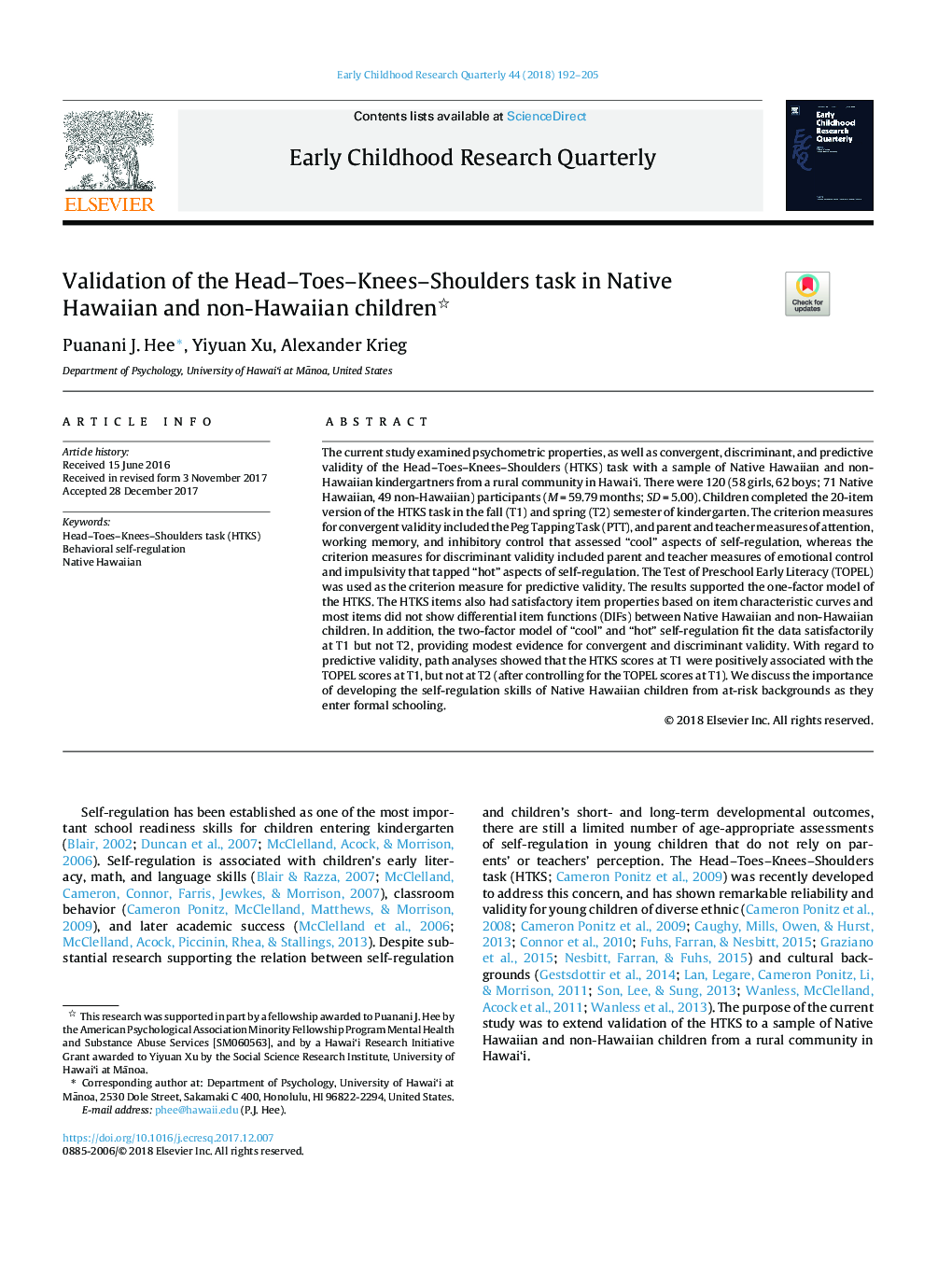| Article ID | Journal | Published Year | Pages | File Type |
|---|---|---|---|---|
| 6840595 | Early Childhood Research Quarterly | 2018 | 14 Pages |
Abstract
The current study examined psychometric properties, as well as convergent, discriminant, and predictive validity of the Head-Toes-Knees-Shoulders (HTKS) task with a sample of Native Hawaiian and non-Hawaiian kindergartners from a rural community in HawaiÊ»i. There were 120 (58 girls, 62 boys; 71 Native Hawaiian, 49 non-Hawaiian) participants (M = 59.79 months; SD = 5.00). Children completed the 20-item version of the HTKS task in the fall (T1) and spring (T2) semester of kindergarten. The criterion measures for convergent validity included the Peg Tapping Task (PTT), and parent and teacher measures of attention, working memory, and inhibitory control that assessed “cool” aspects of self-regulation, whereas the criterion measures for discriminant validity included parent and teacher measures of emotional control and impulsivity that tapped “hot” aspects of self-regulation. The Test of Preschool Early Literacy (TOPEL) was used as the criterion measure for predictive validity. The results supported the one-factor model of the HTKS. The HTKS items also had satisfactory item properties based on item characteristic curves and most items did not show differential item functions (DIFs) between Native Hawaiian and non-Hawaiian children. In addition, the two-factor model of “cool” and “hot” self-regulation fit the data satisfactorily at T1 but not T2, providing modest evidence for convergent and discriminant validity. With regard to predictive validity, path analyses showed that the HTKS scores at T1 were positively associated with the TOPEL scores at T1, but not at T2 (after controlling for the TOPEL scores at T1). We discuss the importance of developing the self-regulation skills of Native Hawaiian children from at-risk backgrounds as they enter formal schooling.
Related Topics
Social Sciences and Humanities
Psychology
Applied Psychology
Authors
Puanani J. Hee, Yiyuan Xu, Alexander Krieg,
